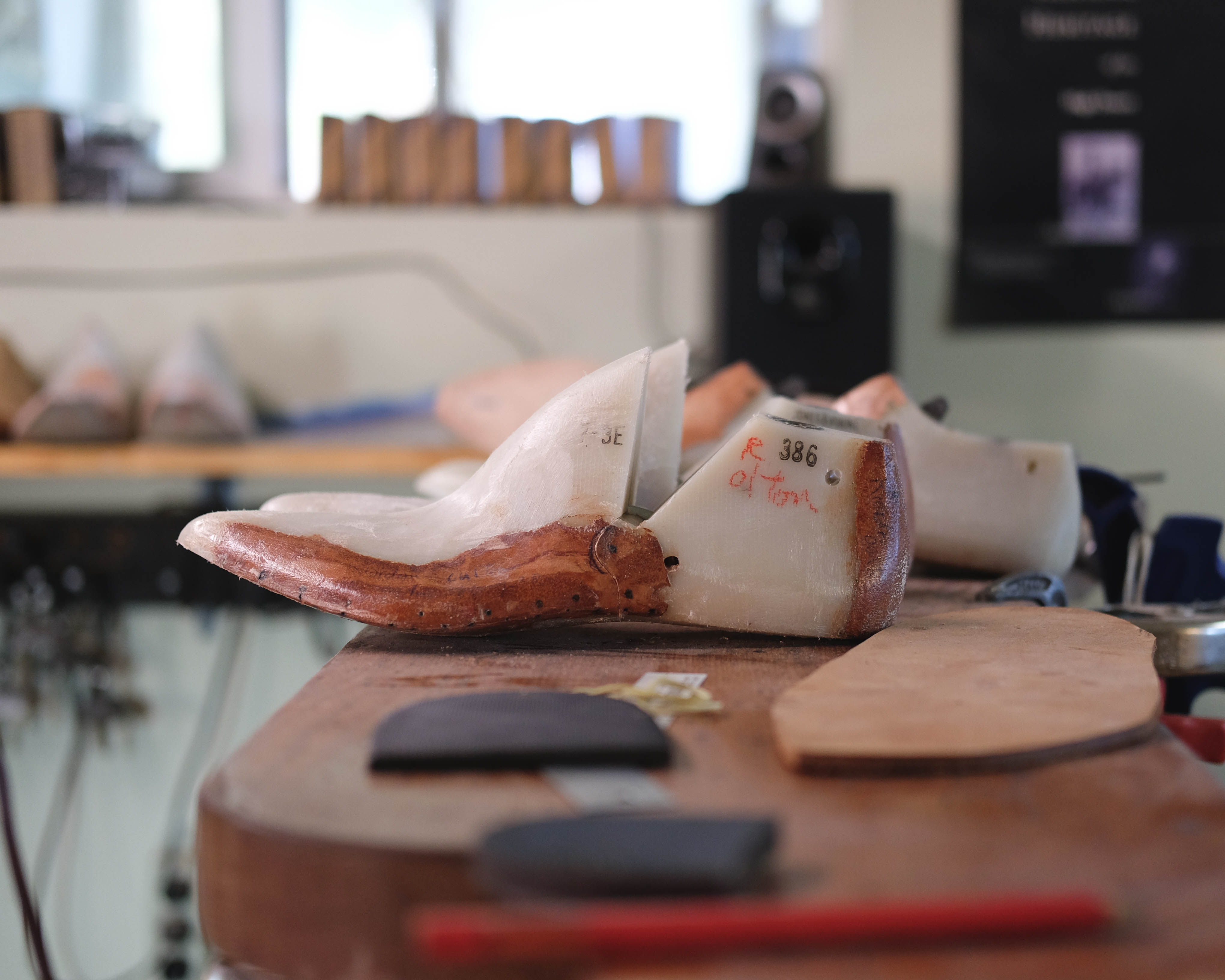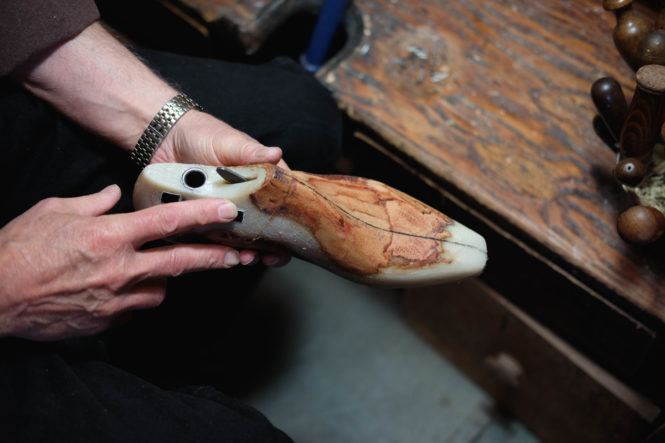Even though I consider myself fairly involved in the men’s clothing scene, I sometimes feel as if all the action is happening far away. Whether it’s trade shows in Florence, fashion week in New York, or textile mills in Japan, it often feels like my apartment is far removed from all the cool stuff. That briefly changed a few weeks ago, when I learned that one of the most well-known bootmakers in the United States lived in the same small town as my parents – sometimes you just get lucky, you know? I took the opportunity to stop by, learn a bit about the history of bootmaking, and see what goes into making a shoe by hand.
DW Frommer is a bit of an anomaly in the world of bespoke shoemaking. While many other well-known artisans and bespoke houses travel around the world to clients and work to amass Instagram followers, Mr. Frommer seems very content to keep his business the same as it’s always been. He doesn’t spend time thinking about marketing initiatives or next season’s offerings – his whole business is simply dedicated to making shoes as well as he possibly can, always striving to make the next pair better than the last.
Mr. Frommer’s career in bootmaking began about 45 years ago, when he started an apprenticeship under a saddlemaker in Albany, Oregon. Saddlery was never his prime interest, but when he discovered his teacher’s pair of bespoke cowboy boots, commissioned in 1934, he found something that resonated with him. Mr. Frommer says that “without a doubt they inspired me, simply because while I was not raised to be a horseman, I did wear boots.” He began learning about bootmaking using that pair as a guide, slowly piecing together the process of making boots by hand. After an apprenticeship under a bootmaker in Montana, Mr. Frommer headed back to Oregon and converted a small backyard shed into a shop. He continued to learn more about the craft and began taking orders, and before long he had a list of clients waiting up to four years for a pair of boots. He’s made many boots out of that shop since then, but hasn’t stopped tweaking his methods, experimenting with different styles, and striving for new ways to elevate his work even further.
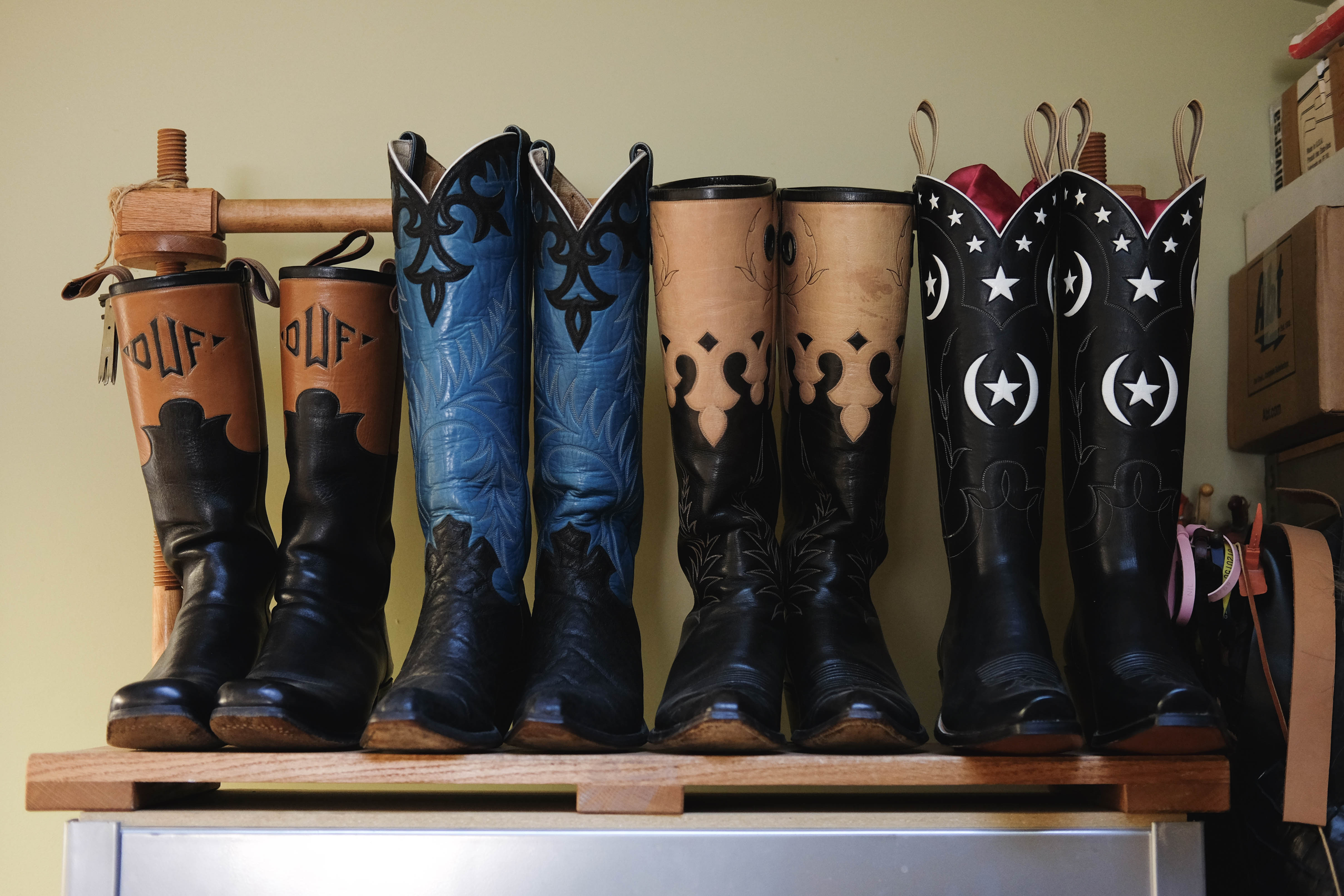
For the first 35 years of his career, Mr. Frommer focused “sole”-ly (heh) on cowboy boots, in large part because that’s what his background was in and that’s what the people of Central Oregon were interested in purchasing. In that amount of time, though, he was able to perfect this style of footwear (those are my words, as he would be unlikely to claim that he’s perfected any aspect of bootmaking “compared to the masters of the Victorian era”), and began looking for new challenges. Traditional footwear had always appealed to him, so he began experimenting with more urban designs – oxfords, chelseas, jodphurs, and so on. Many parts of the process are the same, but there’s much more variety in the styling, which gave Mr. Frommer new ideas to run with. Around this time he also joined online communities like Styleforum, where he was able to not only learn more about current trends in footwear, but chat with other enthusiasts and pick up some clients from outside his Oregon home (the forums also gave him an opportunity to flex on the i-gent n00bs like myself that thought they knew anything about footwear construction). Perhaps the most well-known interaction was when a Styleforum mod commissioned a couple of pairs of boots from Mr. Frommer, and he carefully cataloged the entire shoemaking process. It’s a great read if you have the time.

One thing I discussed at length with Mr. Frommer was Goodyear welting and its affect on the footwear industry. Many shoe enthusiasts (myself included) are taught that the Goodyear Welt is the pinnacle of shoe craftsmanship, the Gold Standard against which everything else is measured. To Mr. Frommer, the Goodyear welt was the beginning of the end, the first major cost-cutting measure on the downward spiral to modern shoemaking. On the surface I could fathom why having something “done by hand” would be theoretically be better than any alternative, but I found it interesting to learn more reasons as to why.
For starters, Goodyear Welting can be done with any sort of material, which sets the stage for substantial sacrifices in quality. While two pieces of paperboard could be stitched together with a Goodyear welting machine, handwelting requires a certain level of material quality. The insole is the core of a handwelted shoe, as a holdfast is carved directly into it (and this in turn becomes the fastening point for the uppers and welt). For this reason, handwelted insoles are made of thick, strong leather – there’s no other alternative.
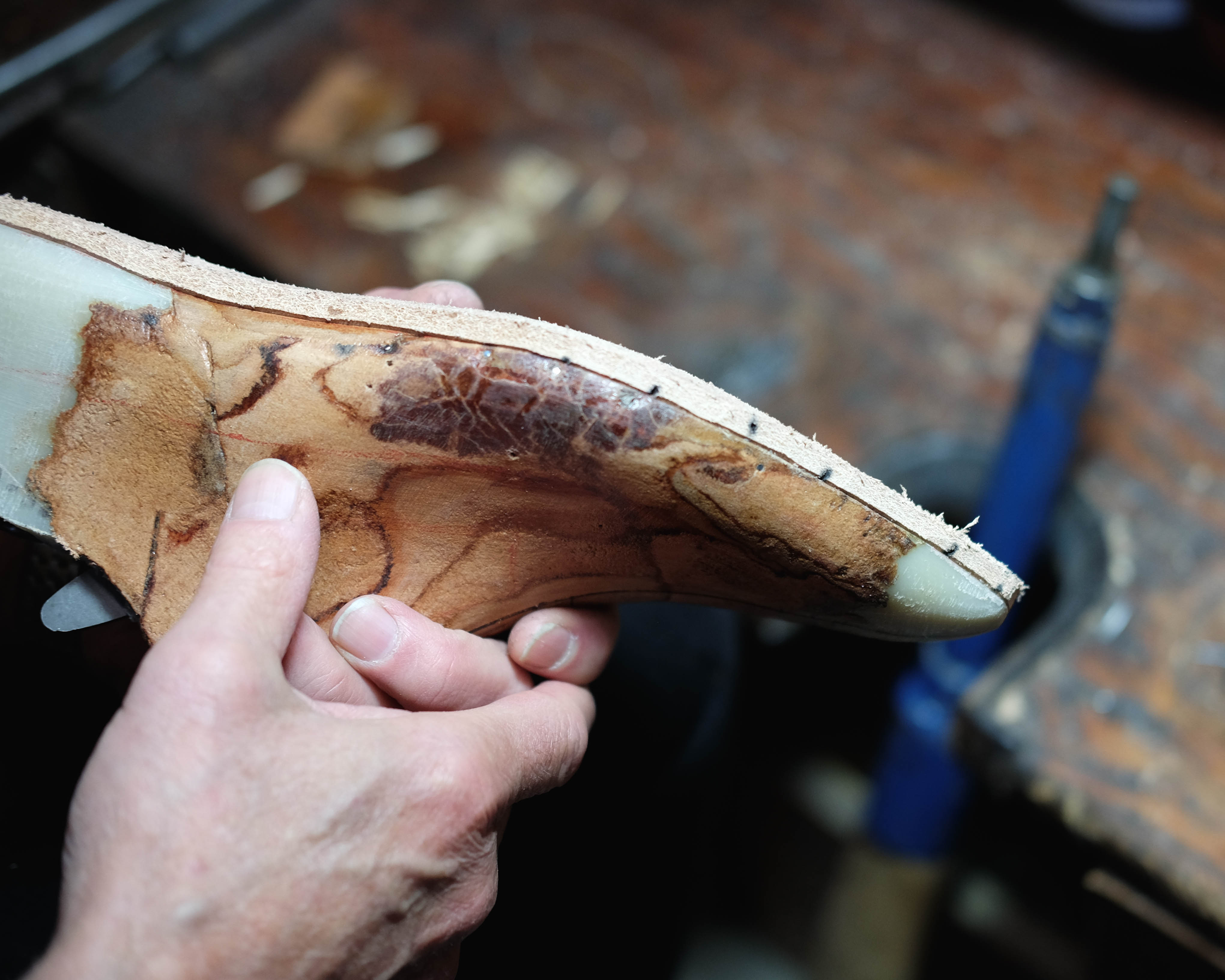
Second is the welt stitch itself – handwelted shoes are made with a “shoemaker’s stitch,” which is effectively the same as a saddle stitch (Mr. Frommer assures me that it was called a shoemaker’s stitch long before it was called a saddle stitch, but I’m not going to pick sides on that one). For starters, this means that if a stitch comes undone, it won’t pull out any others. Goodyear welting, on the other hand, uses a chain stitch. Have you ever bought a bag of charcoal briquettes that has a tear-off top, where you pull the string and it comes off? That’s a chain stitch. As you can imagine, the performance of the two is quite different.

These decisions to choose durability and quality over speed come with many challenges. An example of this is the tools used to hand-stitch the welt. One of the key aspects of saddle/shoemaker stitching is that two needles must pass through a hole at the same time, from opposite sides. This is a challenging step no matter what, but is made even more difficult when the hole is impossibly small (and needs to stay that way). What’s one to do in this situation? Simple – get rid of the needles and use boar’s bristles instead. Each thread begins with a stiff bristle, and then linen strands are then twisted around it until a useable thread is formed. As one might expect with bespoke shoes, there aren’t a lot of pre-made parts so many of the materials require substantial work before they can be used.
What I quickly came to learn is that there are probably hundreds of points at which a shoemaker must decide between efficiency and quality – sometimes the decisions are small, other times quite notable. Whether it’s using wooden pegs instead of nails, leather toe stiffeners instead of celastic ones, or making your own linen thread, each decision is a choice of quality versus convenience. It’s the sum of these choices that ends up determining the quality of the shoe, and Mr. Frommer is an example of what happens when someone always picks the hard, expensive, time-consuming way.
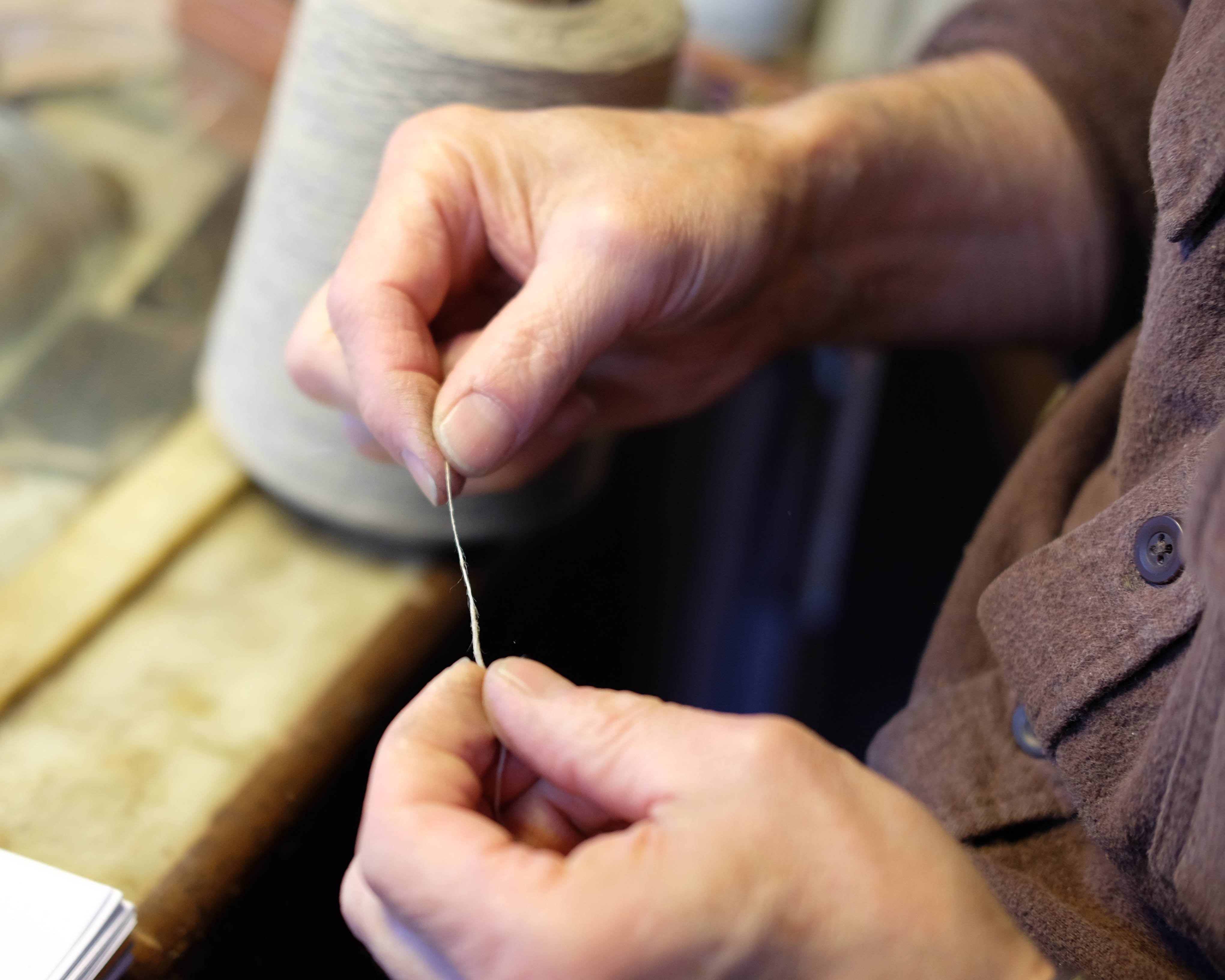
Another common theme was learning how many components of a handmade shoe are getting harder to procure – not only is the craft disappearing, but the raw materials are as well. For instance, the lack of quality boar hair means that Mr. Frommer is sometimes required to use nylon fishing line instead. In the same way, the length of linen staples has decreased as well – in previous decades, Mr. Frommer was able to procure linen staples that were a couple feet long, but these days all that’s on the market are short pieces that are only measure a few inches. Like with knitwear, the length of the staple is very closely correlated with how strong the thread will be.
Even the most critical material in shoemaking – leather – has changed dramatically over the years. Leather is a byproduct of the meat industry, and as those processes change, so do the raw materials. With the prevalence of hormones in the meat industry, cattle reach maturity faster than ever before. This rapid growth means that their hides have less time to develop, so the grain of leather on the market today is not as tightly packed as what you could find in the past. Like with linen fibers, a hide’s grain plays a large role in how strong the leather will be.
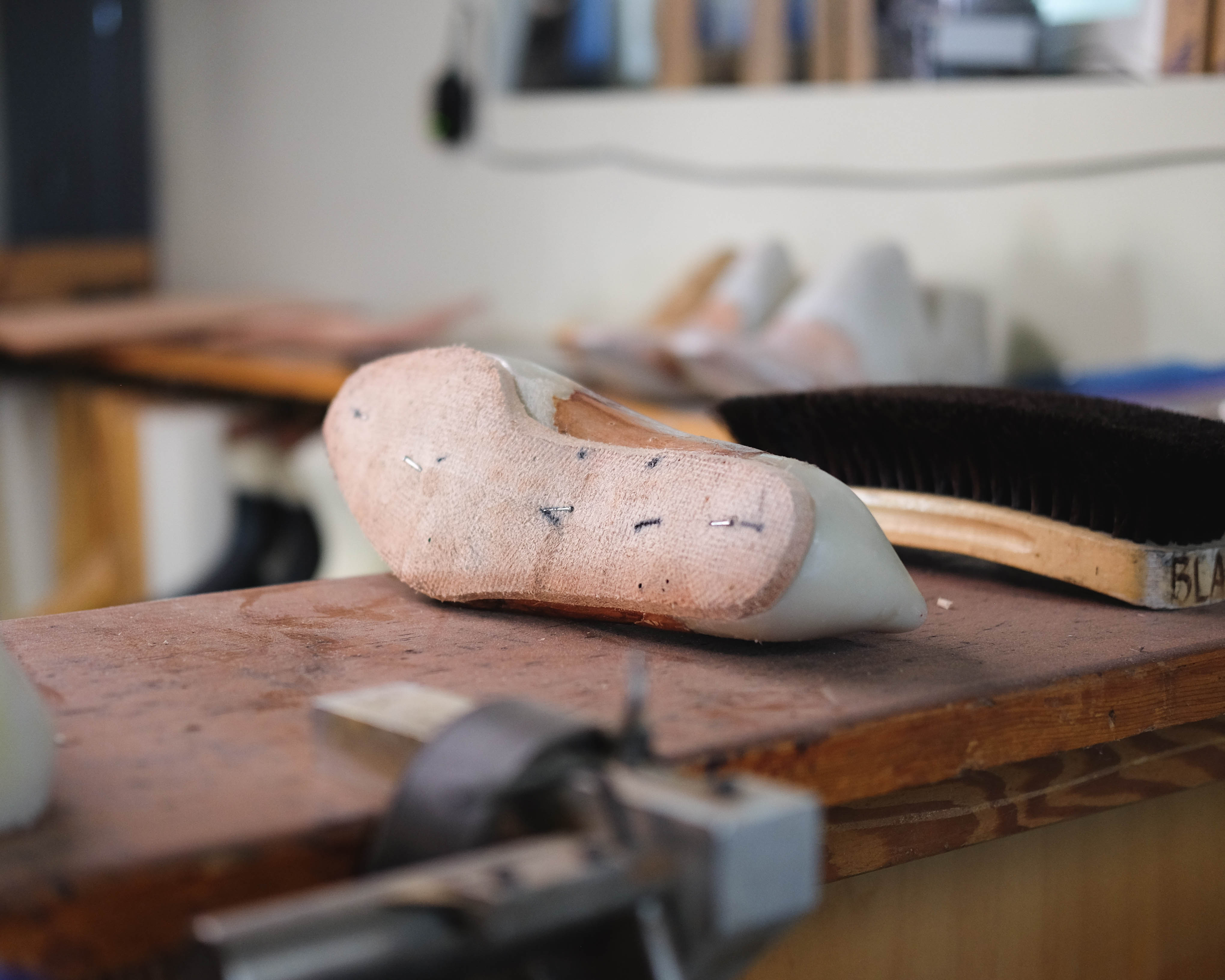
Even with the hurdles of diminishing materials and increasing complexity, Mr. Frommer still finds time to make some incredible shoes and boots. Beyond the western-style boots that he’s done for decades, he enjoys working on shoes that show their craftsmanship through what’s not there – shoes with as few seams as possible, like wholecuts, one-piece chelseas, and the like. He’s very conscious of the importance of negative space, and every cut and seam (there aren’t many) is taken quite seriously. The result is something simple and organic – just leather, thread and pegs – transformed into something hugely complex, through hours of extremely skilled work.
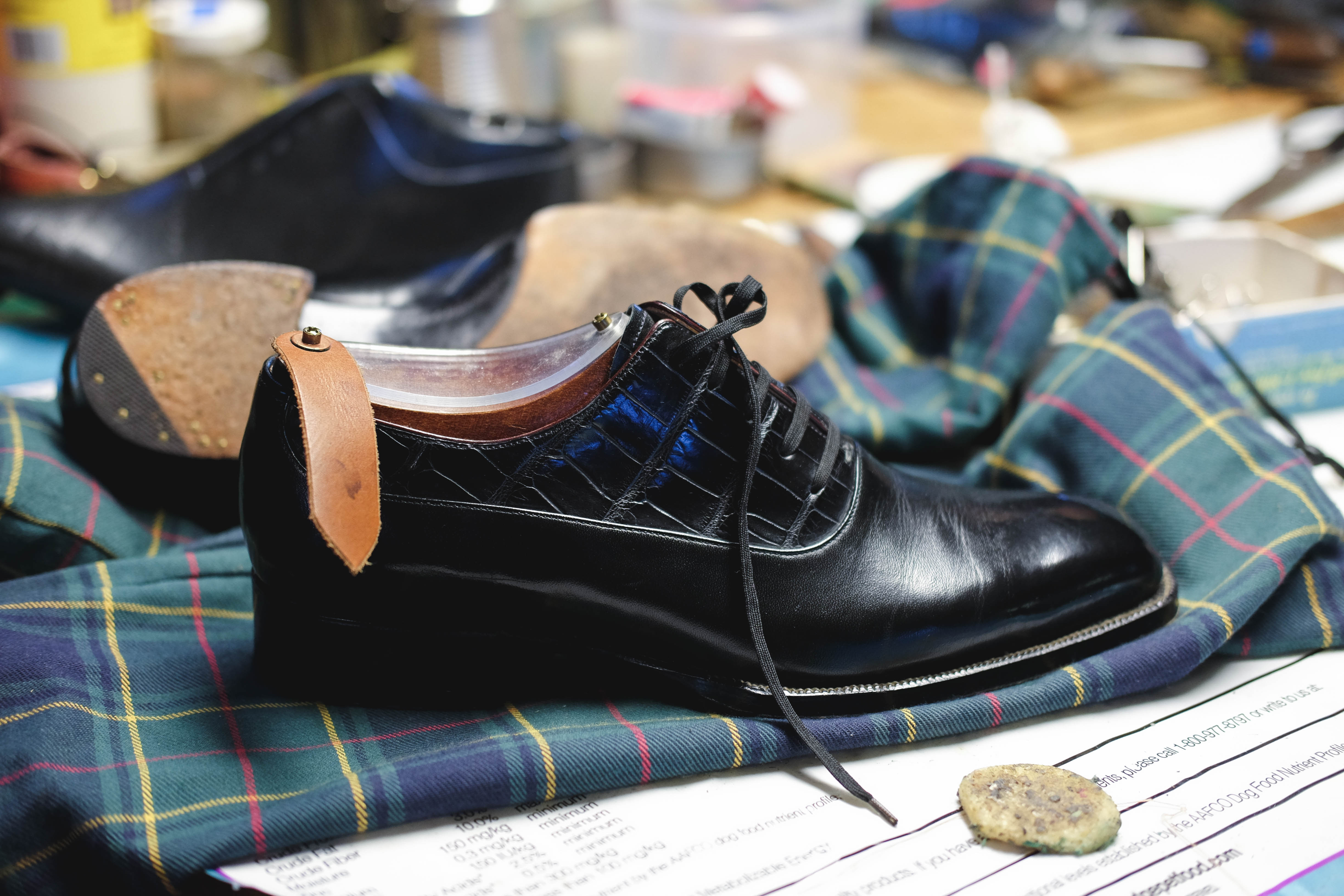
Now at 70 years old, Mr. Frommer is mostly retired, but still picks up a commission or two when he’s approached with something interesting. Even at his level of mastery he’s been able to stay curious and humble, and is constantly looking for a new challenge. At this point though, there aren’t many people for him to compare his work against. Not many shoemakers of this caliber exist these days, so he’s generally comparing his work to his predecessors – shoemakers that only live on through museum exhibits. “Some of those shoes have 64 stitches per inch, all done by eye and by hand,” he says. “I still don’t know how they did that.”
While the craft of making shoes is clearly important to Mr. Frommer, the act of passing the knowledge on is as well. Bespoke shoemaking is a disappearing art, so for the past 35 years he’s worked hard to pass on what he’s learned to people that want to practice the craft (he still takes in students from time to time). He also created The Crispin Colloquy – a forum dedicated to preserving, protecting and archiving bespoke shoemaking knowledge.
Although commissioning bespoke shoes is not a luxury everyone will be able to enjoy, I’m glad people like Mr. Frommer exist. It’s rare to find an artisan so wholly dedicated to their craft – not distracted by branding, marketing, or scaling their business. Mr. Frommer’s goals are simple – make the best shoes he possibly can, and make sure that knowledge is passed on to future generations. He knows that when you choose to do something the hard way there’s not much time for anything else, but the results will speak for themselves. 